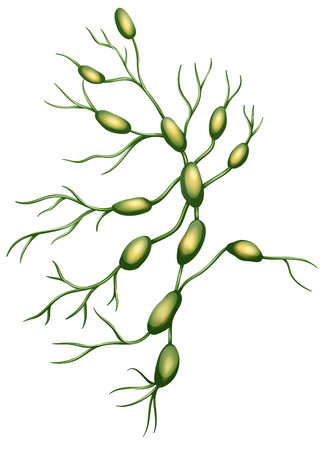Types of Leukemia
Leukemia – the word is derived from Greek meaning white (leu) and blood (kemi). It denotes the cancer of the blood or it refers the cancer of the bone marrow commonly with increased leukocytes (white blood cells). The word leukemia covers large group of diseases called hematological neoplasms.
On the basis of clinical and pathological conditions, the leukemia is divided in to two groups namely acute and chronic type.
Acute leukemia:
In the bone marrow, there is a speedy increase in the immature blood cells and there are only a few possibilities for the bone marrow to produce healthy blood cells under this condition.
This rapid increase, progression and accumulation cause the immature cells to spill over in to blood stream and other organs. This type is commonly found in children and requires immediate treatment. The division of these immature cells does not stop.
Chronic leukemia:
The abnormal cell division happens in mature, old cells. The growth is slow; it takes months or years to progress. These cells are produced at a higher rate than normal ones and there are increased abnormal white blood cells. Normally this type commonly affects the older people.
Further, this disease is divided in to two and again in to four types.
- Lympphocytic– a) acute and b) chronic
- myelogenous – a) acute and b) chronic
These are classified on the basis of the cells affected.
Lymphocytic leukemia is also called as lymphoblastic. In this type, the cancerous changes occur in the newly forming lymphocyte in the bone marrow which is going to look after the immune system. The common lymphocyte that is affected is called B cell. These are further divided in to acute and chronic lymphocytic leukemia.
Myelogenous leukemias are also called as myeloid. Some of marrow cells are transforming in to red blood cells, platelets and white cells. These growing cells are affected and the cancerous changes happen in these types of cells. These are further divided in to acute and chronic myelogenous leukemia.
From these major divisions there are many subdivisions are formed including hairy cell and T-cell prolymphocytic leukemia.
Acute lymphocytic leukemia: It is further divided in to many subdivisions including precursor B acute and precursor T acute lymphocytic leukemia, acute biphenotypic and Burkitt’s leukemia. Normally this condition is occurred in children and also in the old. Survival rate depends of the age group. The higher rate is seen young children and lower rate is seen in the aged. The treatment includes chemo and radiation therapy.
Chronic lymphocytic leukemia:
Normally it does not occur in young children. But it is seen in young adult and adult after 55 years. The survival rate is about 75 % and it is almost up to 5 years after the affection. It is also mostly affecting only men. There is no cure for this disease and survival is achieved by controlling the disease by effective treatment. Among this class the most serious type is called B-cell prolymphocytic leukemia.
Acute myelogenous leukemia:
The subtypes include acute megakaryoblastic leukemia, acute promyelocytic leukemia, and acute myeloblastic leukemia. These forms are commonly seen in adults and men. Women and children are rarely affected. Chemotherapy effectively administered for survival. 40% survival is achieved for five years.
Chronic myelogenous leukemia:
The subtype includes chronic monocytic leukemia and it occurs almost in adults and rarely in children. The treatment is given with Gleevec. The five year survival rate is 90%.
Hairy cell leukemia – Survival is achieved from 90 to 100% by treatment and this condition is easily treated but this also has no cure. Mostly adult men are affected and there is no evidence of affection in young children.
T-PLL – T-cell prolymphocytic leukemia is affecting only T-cells and it does not affect the B-cell. Mostly it affects only the adult men rather than women. But this disease is only rate type but very aggressive type.
Large granular lymphocytic leukemia is very rare and slowly progressing type. It in involves T cell or NK cells.

